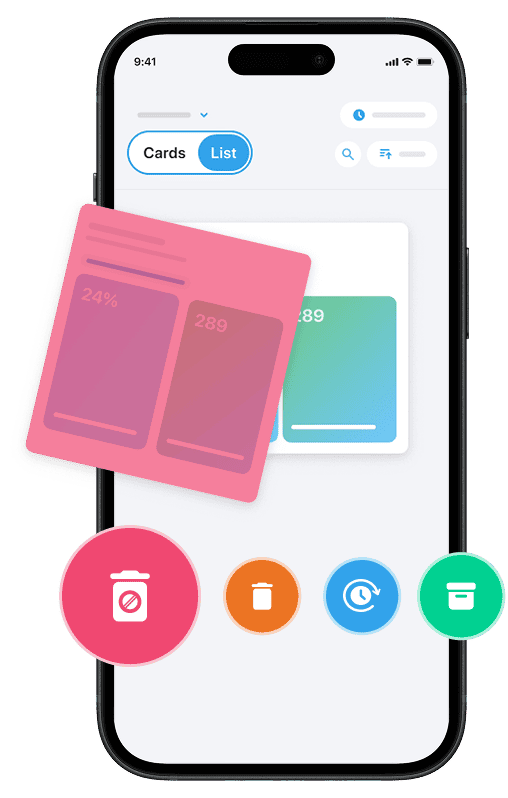Do you check your email every 5 minutes? You’re not alone. For many professionals in the U.S., email feels like a never-ending stream of messages that demand attention. But if you want to learn how to stop checking email all the time, it’s important to remember that doing so too often can lower your productivity, hurt your focus, and make you feel overwhelmed.
This guide will show you how to stop checking email all the time—and build digital habits that improve your time management and reduce stress.
If you want to clean your email inbox and keep it free of spam, you can always use Cleanfox to take back control of your inbox.
Why We Check Email Too Often
Many people check their inbox out of habit. Others feel pressure to respond quickly or fear missing something important. But constant email checking leads to more distraction, less focus, and lower efficiency.
Let’s look at simple ways to break the cycle and stay productive.
1. Check Email at Set Times
Instead of checking your inbox all day, choose 2–3 specific times. For example:
- 10:30 AM – Review and reply to key messages
- 2:00 PM – Handle non-urgent emails
- 4:30 PM – Final check before logging off
These time blocks help you focus on real work between email sessions.
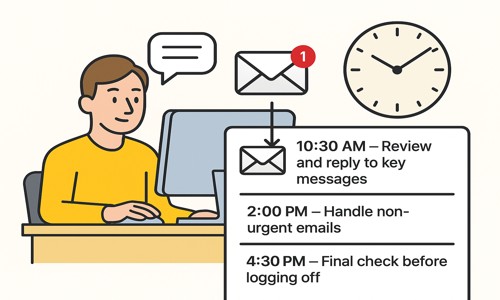
2. Turn Off Notifications
Email notifications might seem helpful, but they often do more harm than good. Every ping, pop-up, or badge pulls your attention away from what really matters—breaking your concentration and lowering productivity.
The solution? Turn off email notifications on both your phone and computer. This small change helps you take back control of your time. Instead of reacting to every message the moment it arrives, you decide when to check your inbox—on your terms, not your device’s.
By turning off alerts, you reduce distractions, stay more focused, and create space for deep work
3. Use an Email Routine
Create a routine you can stick to. A good routine supports your focus and boosts productivity. For example:
- Start your day with a task, not email
- Check email after completing a big job
- Reply only during your scheduled times
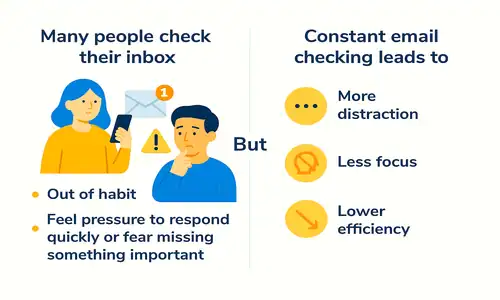
4. Apply the 2-Minute Rule to Stay Productive
During your scheduled email time, don’t waste energy overthinking each message. Instead, use the 2-minute rule: if an email can be answered in under two minutes, reply to it immediately.
This simple habit helps you quickly clear out small tasks, reduce inbox clutter, and stay focused on what matters. For longer replies, add them to your task list or save them for a dedicated time.
By applying the 2-minute rule consistently, you’ll improve your email habits, work more efficiently, and avoid spending your whole day checking messages.
5. Clean Up Your Inbox
A messy inbox makes email more stressful. Take 10 minutes to delete, archive, or sort messages. Unsubscribe from things you no longer read. A cleaner inbox means fewer distractions and more clarity. Above, you can use our platform for free to clean your spam and boost your productivity.
Say goodbye to spam, clutter, and chaos.
Our smart email cleaner filters out junk, organizes your inbox, and helps you focus on what really matters.
✅ Block spam automatically
✅ Organize emails by priority
✅ Keep your inbox clean
✅ Clean old emails you don’t read
📱 Available on the App Store and Google Play.
6. Use Filters and Labels
Let your email program organize your messages. Use filters to send newsletters and updates to folders. Use labels to group by project or client. That way, you only see what’s important first.
7. Create Work-Life Balance
Checking email late at night, during meals, or in your free time can seriously impact your mental health and overall well-being. That’s why it’s important to create clear boundaries for when you disconnect from email. Try to avoid checking messages after work hours or on weekends—unless it’s truly urgent. Protecting your personal time helps you recharge, reduce stress, and maintain a healthier work-life balance.
Establishing these limits also trains others to respect your availability, so you’re not expected to be “always on.”
8. Use Self-Control Tools
If you find yourself checking email too often, try using apps designed to help you stay focused. Tools like Cleanfox let you block access to email during specific hours, so you’re not tempted to peek.
These small tools can make a big difference in your ability to manage time, stay productive, and reduce digital overload.
Below, you can see how Cleanfox works and how it can help reduce your email spam.
9. Replace the Habit
If you check email out of boredom, try something else. Stand up, stretch, or drink water. These quick breaks help refresh your mind and avoid distractions. I do this all the time, and it always works.
10. Tell People When You’ll Reply
Include a short message in your email signature, such as: ‘I check email at 11 a.m. and 3 p.m. each day.’ This helps set clear expectations, promotes healthy digital boundaries, and builds trust with your contacts.
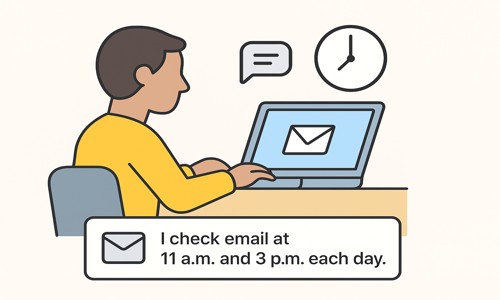
11. Use a Digital Detox Period
Intentionally block out one full day each week—or even just an hour a day—where you step away from your inbox and avoid checking any email. This simple digital detox allows your brain to rest, reduces cognitive overload, and helps you rebuild deeper focus and mental clarity over time.
12. Track Your Progress
Notice how often you check your email for a full day. Then try to reduce it. Each step counts. Over time, your email habits will feel more natural and less stressful.
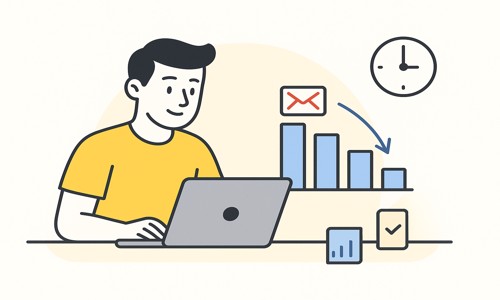
Final Thoughts 💡
You don’t need to quit email cold turkey to stop checking it all the time—you just need to build smarter digital habits. By setting specific times to check your inbox, turning off unnecessary alerts, and protecting your focus, you’ll take back control of your attention.
These small, intentional changes can lead to major improvements in both productivity and peace of mind. Over time, you’ll find it easier to stay present, get more done, and enjoy better work-life balance.
Start today—and let your inbox serve you, not stress you.
If you’d like, you can explore more of our blog to learn about email best practices, clean your inbox, and boost your productivity with Cleanfox.



